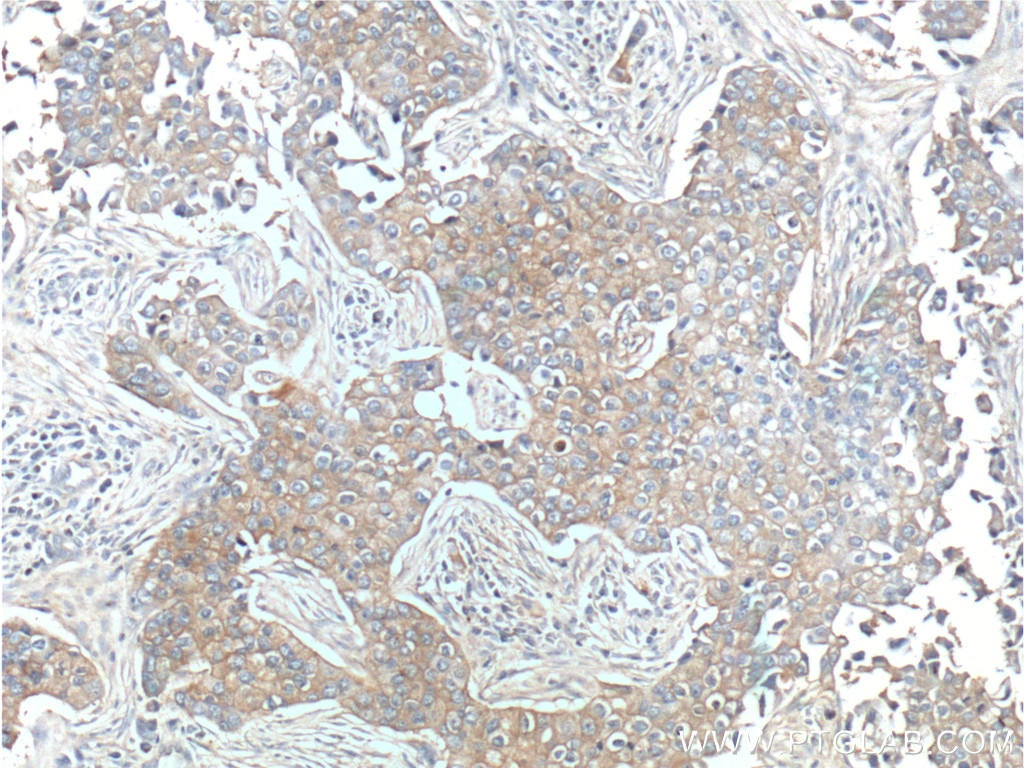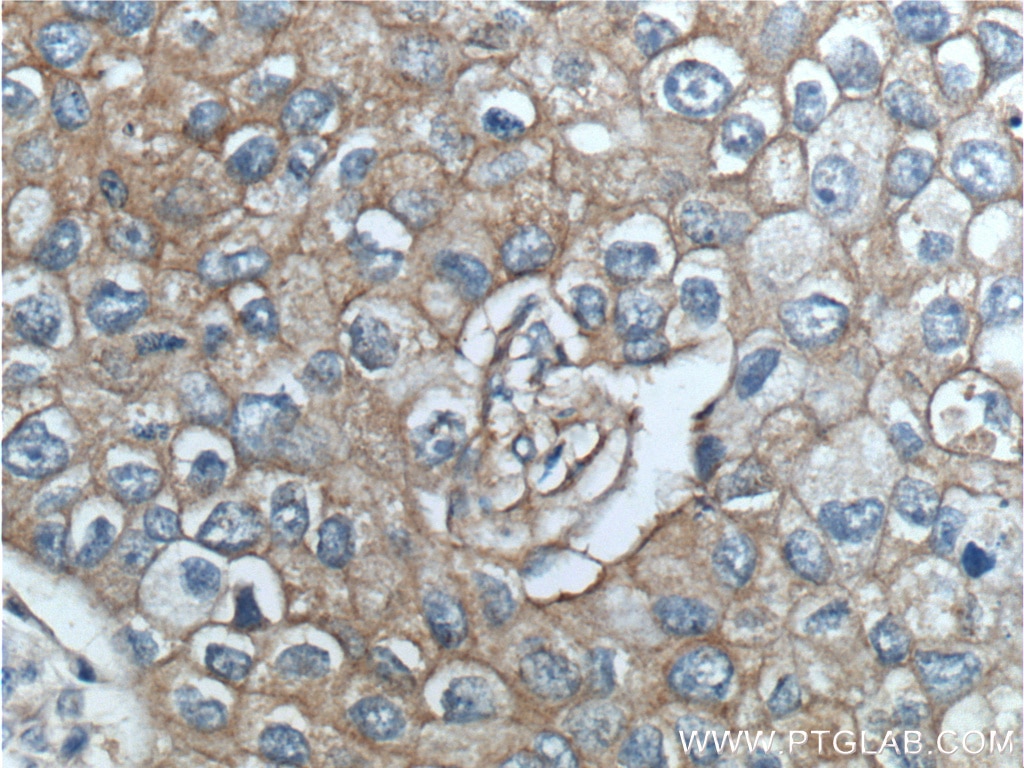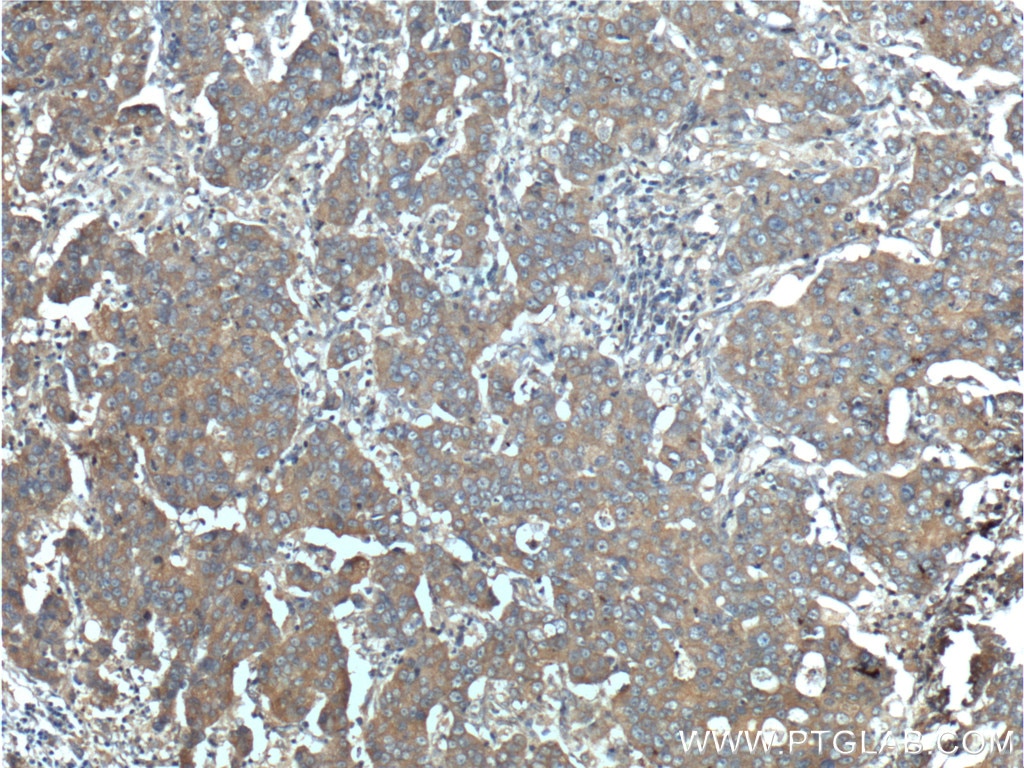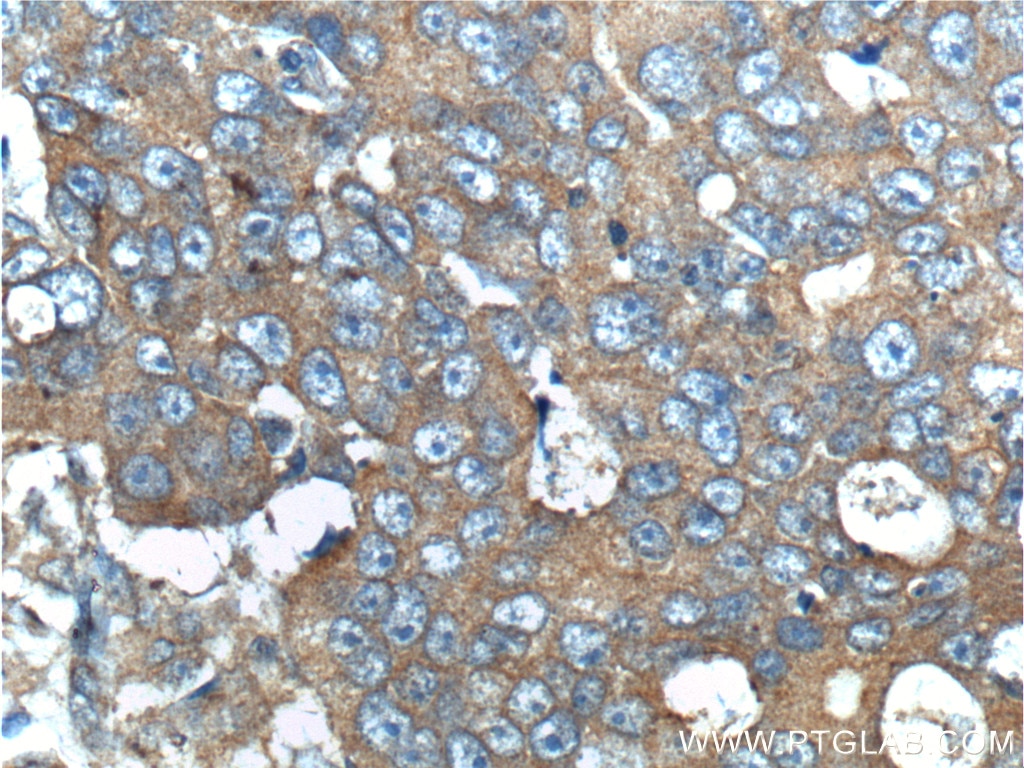Anticorps Polyclonal de lapin anti-ERBB3
ERBB3 Polyclonal Antibody for IHC, ELISA
Hôte / Isotype
Lapin / IgG
Réactivité testée
Humain et plus (1)
Applications
WB, IHC, ELISA
Conjugaison
Non conjugué
N° de cat : 10369-1-AP
Synonymes
Galerie de données de validation
Applications testées
| Résultats positifs en IHC | tissu de cancer du sein humain, tissu de cancer de la prostate humain il est suggéré de démasquer l'antigène avec un tampon de TE buffer pH 9.0; (*) À défaut, 'le démasquage de l'antigène peut être 'effectué avec un tampon citrate pH 6,0. |
Dilution recommandée
| Application | Dilution |
|---|---|
| Immunohistochimie (IHC) | IHC : 1:50-1:500 |
| It is recommended that this reagent should be titrated in each testing system to obtain optimal results. | |
| Sample-dependent, check data in validation data gallery | |
Applications publiées
| WB | See 9 publications below |
| IHC | See 1 publications below |
Informations sur le produit
10369-1-AP cible ERBB3 dans les applications de WB, IHC, ELISA et montre une réactivité avec des échantillons Humain
| Réactivité | Humain |
| Réactivité citée | Humain, souris |
| Hôte / Isotype | Lapin / IgG |
| Clonalité | Polyclonal |
| Type | Anticorps |
| Immunogène | ERBB3 Protéine recombinante Ag0215 |
| Nom complet | v-erb-b2 erythroblastic leukemia viral oncogene homolog 3 (avian) |
| Masse moléculaire calculée | 148 kDa |
| Numéro d’acquisition GenBank | BC002706 |
| Symbole du gène | ERBB3 |
| Identification du gène (NCBI) | 2065 |
| Conjugaison | Non conjugué |
| Forme | Liquide |
| Méthode de purification | Purification par affinité contre l'antigène |
| Tampon de stockage | PBS with 0.02% sodium azide and 50% glycerol |
| Conditions de stockage | Stocker à -20°C. Stable pendant un an après l'expédition. L'aliquotage n'est pas nécessaire pour le stockage à -20oC Les 20ul contiennent 0,1% de BSA. |
Informations générales
V-erb-b2 erythroblastic leukemia viral oncogene homolog 3 (ErbB-3, HER3) is a member of the EGF receptor tyrosine kinase family including EGFR (HER1), Neu (ErbB-2, HER2), ErbB-3 (HER3), and ErbB-4 (HER4) that are frequently overexpressed in a variety of carcinomas. These family members form either homodimers or heterodimers upon ligand binding to mediate cell growth. ErbB-3 binds and is activated by neuregulins and NTAK. It forms a heterodimer with each of the other ErbB receptors. ErbB-3 is predominantly expressed in epithelial tissues and brain, and is overexpressed in a subset of human mammary tumors.
Protocole
| Product Specific Protocols | |
|---|---|
| IHC protocol for ERBB3 antibody 10369-1-AP | Download protocol |
| Standard Protocols | |
|---|---|
| Click here to view our Standard Protocols |
Publications
| Species | Application | Title |
|---|---|---|
Acta Pharmacol Sin Quantitative systems pharmacology modeling of HER2-positive metastatic breast cancer for translational efficacy evaluation and combination assessment across therapeutic modalities | ||
Cells NOX4 Signaling Mediates Cancer Development and Therapeutic Resistance through HER3 in Ovarian Cancer Cells. | ||
J Oncol CircEPSTI1 Promotes the Proliferation of HER2-Positive Breast Cancer Cells via circEPSTI1/miR-145/ERBB3 Axis | ||
Acta Otolaryngol ErbB1 and ErbB2 overexpression in patients with sinonasal inverted papilloma and inverted papilloma with squamous cell carcinoma in China. | ||
Front Oncol NUF2 overexpression contributes to epithelial ovarian cancer progression via ERBB3-mediated PI3K-AKT and MAPK signaling axes |
Avis
The reviews below have been submitted by verified Proteintech customers who received an incentive for providing their feedback.
FH Morgan (Verified Customer) (10-26-2021) | I could not get any detection for this antibody at all. It strangely appeared on the ladder and I did not know how to troubleshoot. It occurred in both western blot attempts that I tried (Please see images)
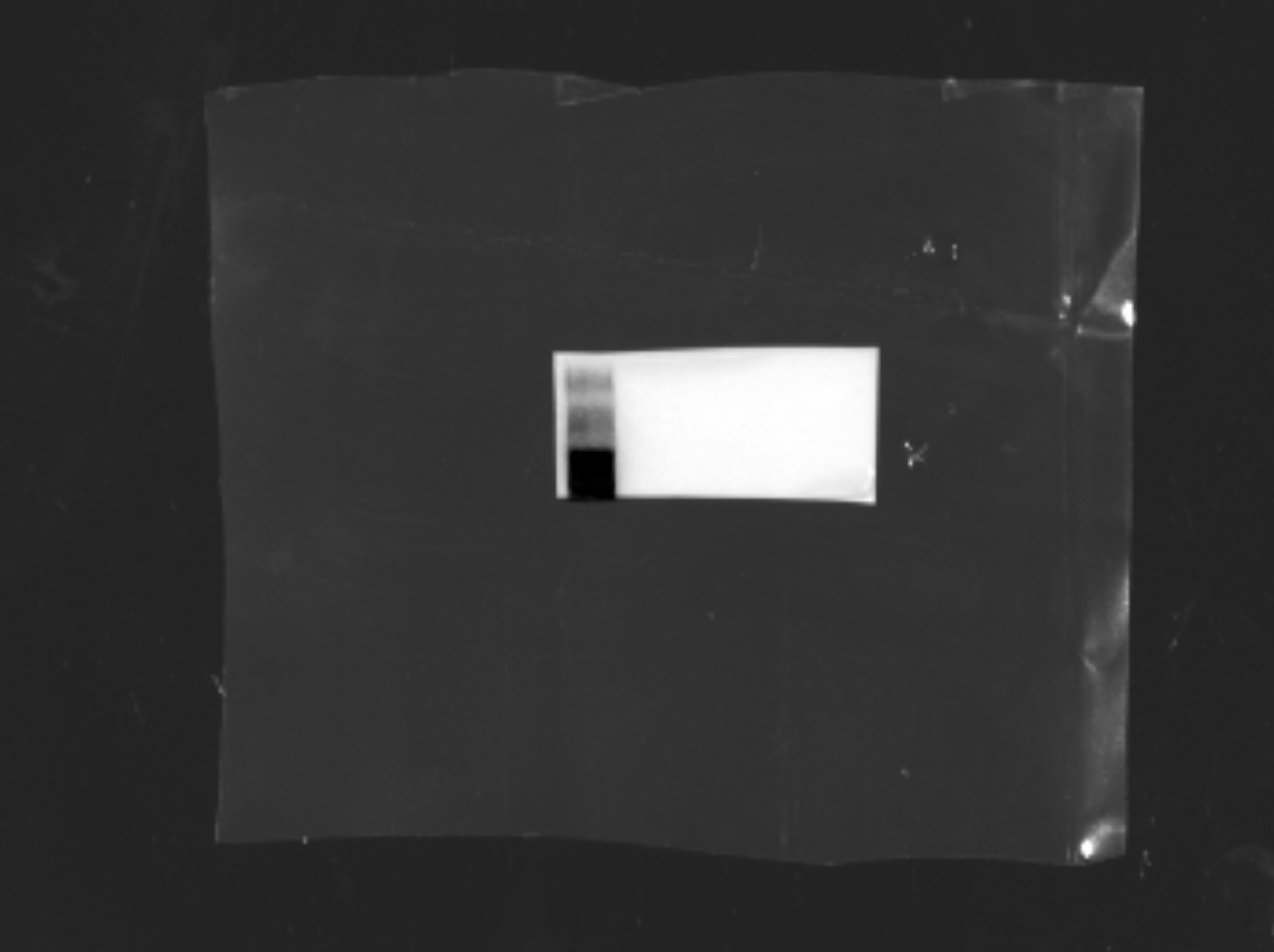 |
